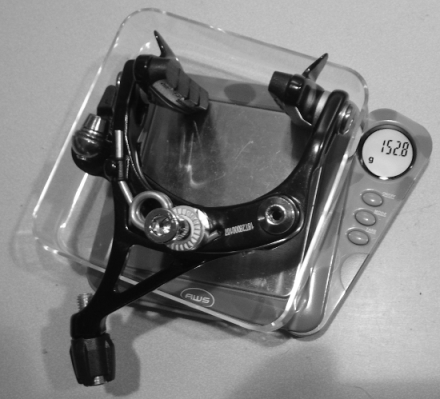New saddle arrived. Feels nice, feels light, looks cool, magnet doesn’t stick to seat rails.
Nashbar claims 191 grams. I get 205.8. That’s 7.8% high. Weighing, as before, used the AWS Blade scale calibrated using the 200 g weight.

I wanted to put this in perspective, so I looked up the prices of the other saddles that Nashbar sells.

My first takeaway is that old-style riveted leather saddles are heavy. The second is that, while the R2 remains a value, I’d be very unhappy with Nashbar’s claimed 191 g weight if I manufactured the 190g saddles priced at $50-55.
I see 8% less weight savings than expected using the R2, but how much less attractive does that make the saddle?

As shown in green, the claimed weight netted me weight savings at $87.57 per pound. In reality, it cost me $95.35 per pound, and my bike’s mass is 15 grams more than expected.
Reviews at Nashbar.com state that the saddle weighs 214, 208, 209, and 220 g. Averaging them together with the measured 205.8g yields 211 +/- 5.7 g. With only 5 samples and normally-distributed data, the uncertainty in the variance is considerable, and is slightly underestimated (by 7 %). Call it 211 +/- 6 g. Since Nashbar has lawyers, we don’t have very many samples, not all scale users know what they’re doing, and process variations aren’t always Gaussian, let’s double the variation, to 211 +/- 12 g (that’s almost an ounce variation, peak to peak). Using these data, if the saddle masses are “normally distributed”, less than one in ten saddles will have mass at or below 191g.
Weight-wise, the R2 remains a compelling value for budget-minded buyers, just not the exceptional value 191g presents. If the R2’s mass is consistently higher as than 191g, as reviews indicate, then the saddle is improperly labelled and advertised. If the manufacturing process yields saddles that are 176g as often as it does 206g saddles, quantified variation (expressed as 191 +/- 15 g) would be a straightforward consumer resource.







